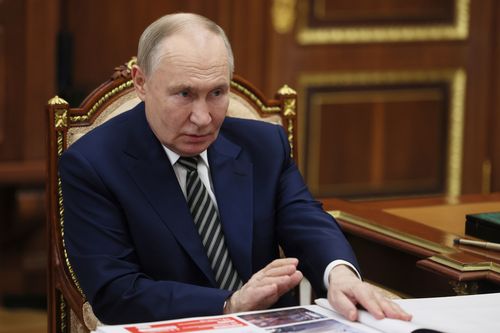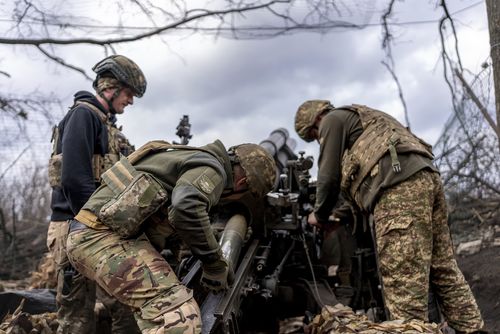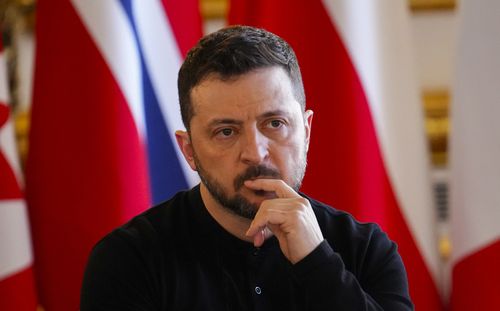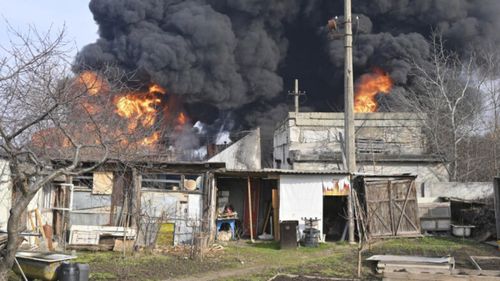By signalling its openness to a ceasefire, Ukraine has handed the Kremlin a difficult challenge at a time when the Russian military has the upper hand in the war: Should Moscow accept a truce and abandon hopes of making new gains, or should it reject the offer and risk derailing a cautious rapprochement with the US?
Russian President Vladimir Putin has repeatedly ruled out a temporary break in hostilities, saying it would only benefit Ukraine and its Western allies by letting them replenish their arsenals. He has insisted Moscow wants a comprehensive agreement that would ensure a lasting settlement.
The Kremlin responded cautiously to the news of Ukraine accepting the US-proposed truce during Tuesday’s talks in Saudi Arabia, saying that it needs to know details of the discussions before expressing its view.

The careful approach reflects Putin’s awareness of the risk that a blunt rejection of the offer could upset tentative efforts to normalise Russia-US ties.
Observers say that instead of an outright rejection, Putin will likely propose linking the truce to certain conditions that would protect Moscow’s interests.
Why would the Kremlin oppose a ceasefire?
The Russian military held the battlefield initiative last year, making slow but steady gains along several sections of the 1000-km front line. The tempo of Russian advances accelerated in the fall, when Moscow’s forces captured the most territory since the start of the war.
Ukraine has sought to retake the initiative with a surprise foray into Russia’s Kursk region that began in August, seeking to distract Moscow’s forces from their offensive in eastern Ukraine and make gains that potentially could be exchanged for Russia-occupied areas in peace talks.
The incursion, however, has diverted Ukrainian resources from defending the Donetsk region in the east and it failed to stem Russian advances there. Now Ukrainian forces are on the verge of losing their last remaining bridgehead in Kursk under the brunt of a swift Russian counteroffensive.

Moscow also ravaged Ukrainian energy infrastructure with waves of missiles and drones, destroying much of its power-generating capacity.
Putin has repeatedly said a temporary halt to hostilities at a time when Russian forces firmly hold the initiative would only allow exhausted Ukrainian troops a break to rest and rearm.
“As for the settlement of the situation, I would like to emphasise that it shouldn’t be aimed at a brief truce — some sort of a break for regrouping troops and rearmament in order to continue the conflict — but a long-term peace,” Putin has said.
Moscow has made it clear it wouldn’t accept any troops from NATO members as monitors under a prospective peace deal.
Putin key goals remain what he declared when he launched the full-scale invasion on February 24, 2022: Ukraine renounce joining NATO, sharply cut its army, and protect Russian language and culture to keep the country in Moscow’s orbit. On top of that, he now wants Kyiv to withdraw its forces from the four regions Moscow has seized but doesn’t fully control.

Russian officials also have said that any prospective peace deal should involve unfreezing Russian assets in the West and lifting other US and European Union sanctions. The Trump administration has put a potential sanctions relief on the table.
Along with that, Putin has repeatedly emphasised the need to “remove the root causes of the crisis,” a reference to the Kremlin’s demand to roll back a NATO military buildup near Russian borders it describes as a major threat to its security.
The Kremlin leader has argued that Ukraine’s President Volodymyr Zelenskyy, whose term expired last year, lacks the legitimacy to sign a peace deal. Kyiv maintains that elections are impossible to hold amid a war. US President Donald Trump has spoken of the need for Ukraine to hold an election in comments that echoed Moscow’s view.
What more could Moscow demand?
Some observers noted that instead of an outright rejection of the proposed truce, Putin could put forward several conditions.
Pro-Kremlin commentator Sergei Markov suggested Moscow could agree to a truce if Ukraine’s allies halt arms supplies to Kyiv. The US said it resumed weapons shipments and intelligence sharing with Kyiv after it agreed to a truce on Tuesday in Saudi Arabia.

“Russia could say ‘yes, but’ to a ceasefire offer, accepting a 30-day truce on condition that an embargo is imposed on arms supplies to Ukraine,” Markov wrote.
Another Moscow wish is a presidential election in Ukraine, which would be possible after Ukraine lifts martial law.
“Peace would allow Russia to influence Ukrainian politics and use peaceful means to ensure friendly relations,” Markov said.
Moscow-based foreign policy expert Alexei Naumov also predicted that Russia would likely accept the ceasefire offer if it leads to an election in Ukraine.
“There is a paradox in these talks and peace initiatives – Ukraine and Russia are both vying for Donald Trump’s attention and seeking to improve their positions with his help,” Naumov said in a commentary.
Sam Greene of the Washington-based Centre for European Policy Analysis said it would be hard to imagine Putin saying a categoric “no” to the ceasefire proposal, adding that the Kremlin leader “has already achieved in some ways more through this negotiation process … then he achieved in a long time on the battlefield,” describing a brief halt in the US military assistance to Ukraine and the talk about rolling back sanctions as “big wins” for Russia.
Putin’s statements against a temporary truce mean simply that Russia is “not likely to agree to a ceasefire without extracting various things along the way,” Greene said.
“The sort of ceasefire that it might be interested in is quite clearly not the kind of ceasefire that the Ukrainians or the Europeans might be interested in, although the Americans may be more malleable on that,” he added.





